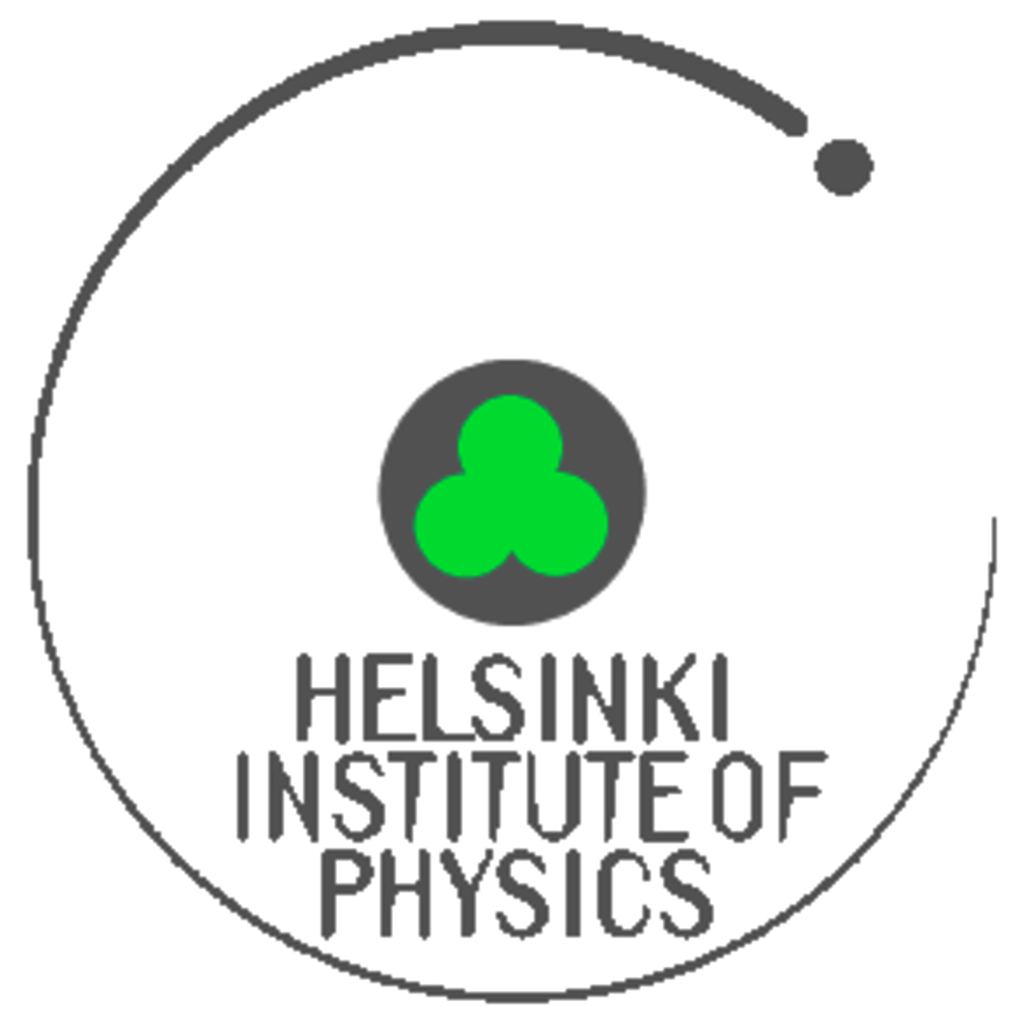History of gravitational waves
- 1915: General relativity (Einstein)
- 1916: Prediction of
gravitational waves
- Are they real?
- 1936: Einstein 'proves' they don't exist (wrong!)
- 1957: Persuasive "Sticky bead argument"
- 1960s: Searches start, initially with resonant bars
- 1975: Inferred from Hulse-Taylor pulsar
(1993 Nobel Prize) - 2015: Directly detected by LIGO
(2017 Nobel Prize)
.png)
What is a gravitational wave?
- Stretches and squeezes a ring of matter
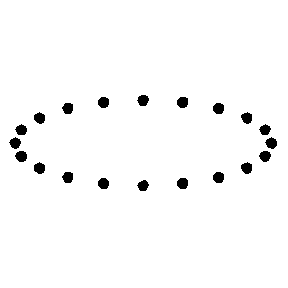 $\Leftrightarrow$
$\Leftrightarrow$
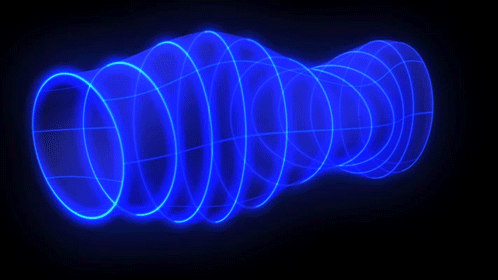
Two polarisations
- just like light
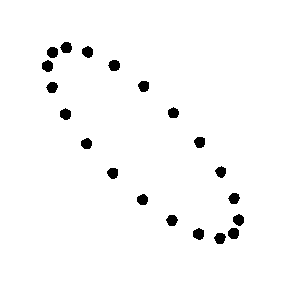

First evidence: Hulse-Taylor pulsar
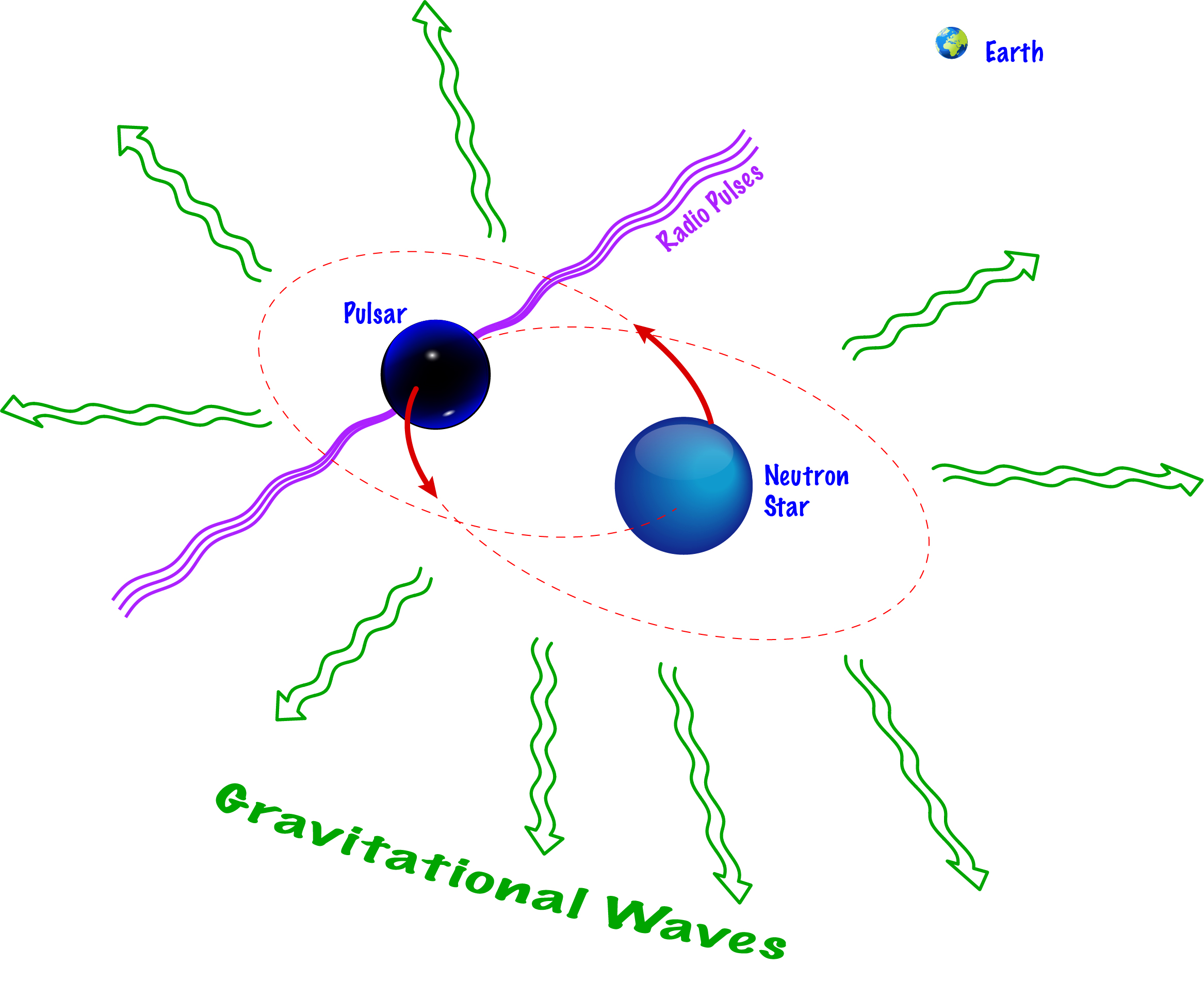
Hulse-Taylor pulsar
- Two neutron stars, of which at least one pulsar
- Orbital diameter: 3 light seconds
- Orbital period: 7.75 hours
- Orbit slowly contracting (3.5 metres per year)
- Energy must be going somewhere...
gravitational waves - Gravitational wave power output: $7\times 10^{24} \, \mathrm{W}$
(about 2% of the Sun's EM radiation).
Orbital decay of Hulse-Taylor pulsar
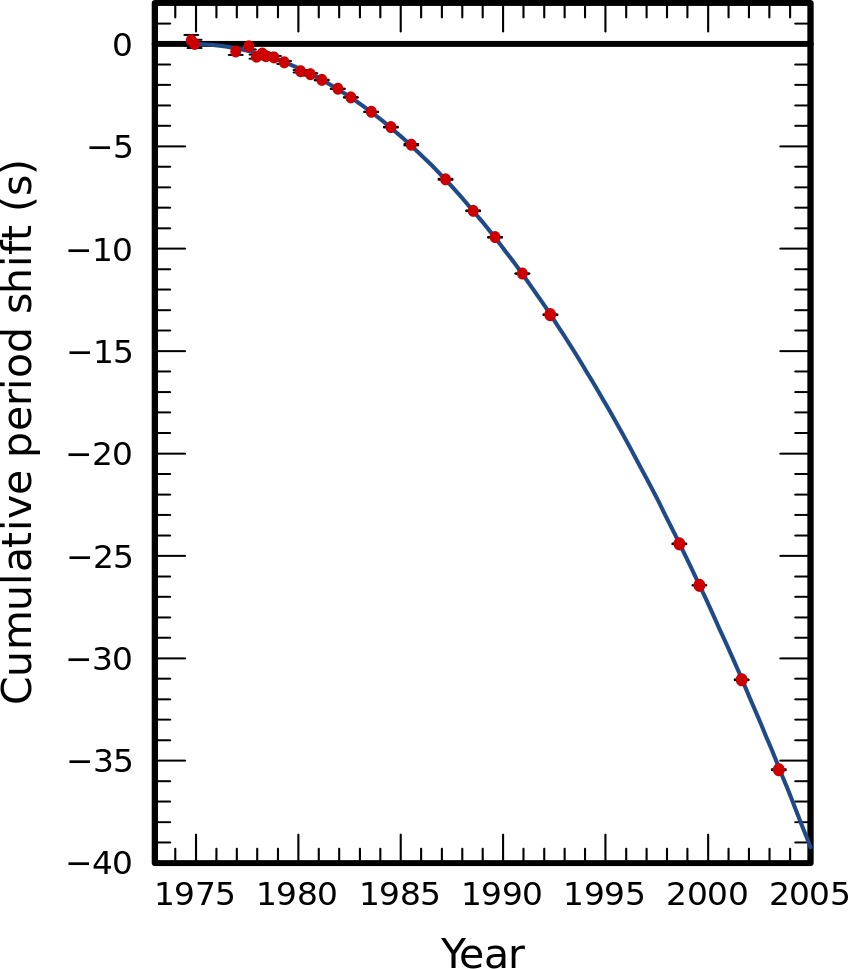
Solid curve - predicton of relativity; red dots - measurements
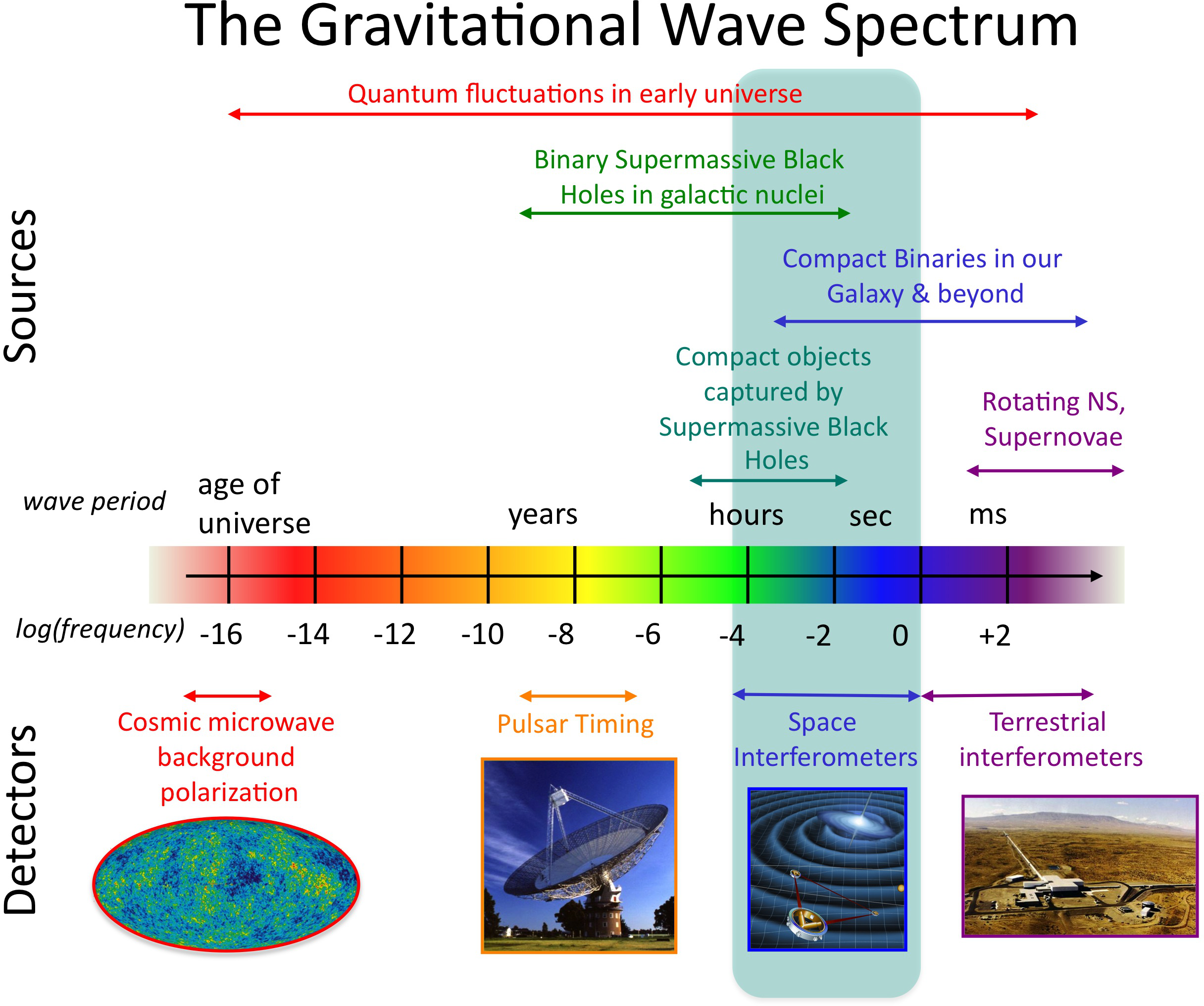
Early efforts: resonant bars
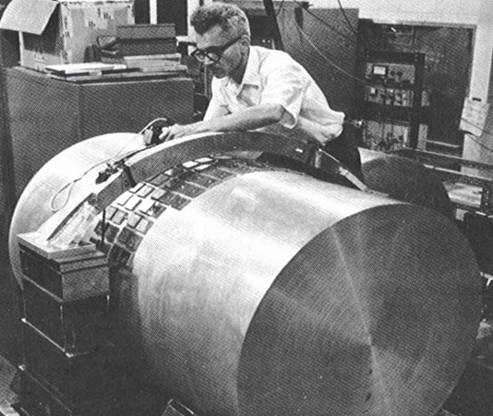
Joseph Weber with his resonant bar in the 1960s
Major ongoing projects:
- LIGO/VIRGO
- LISA
- Pulsar timing arrays
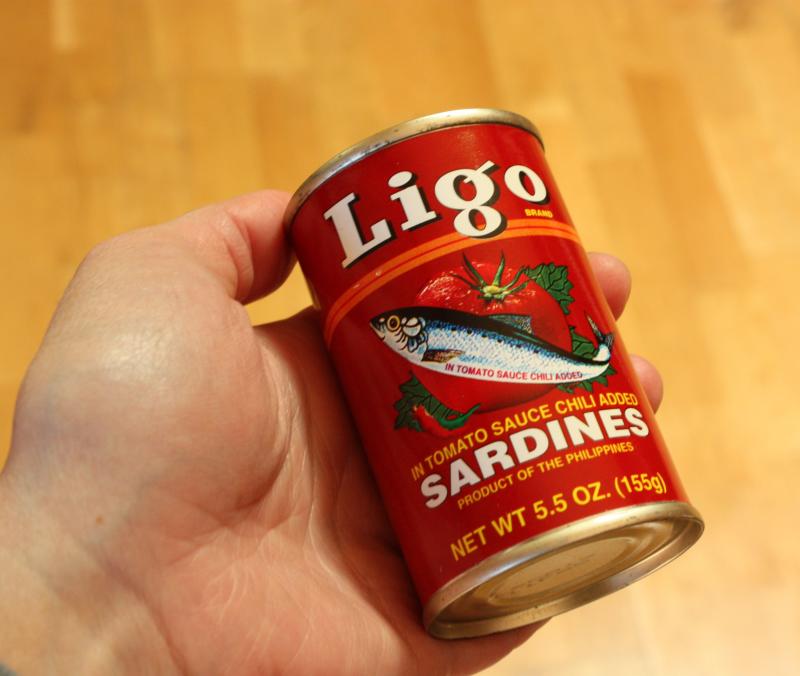
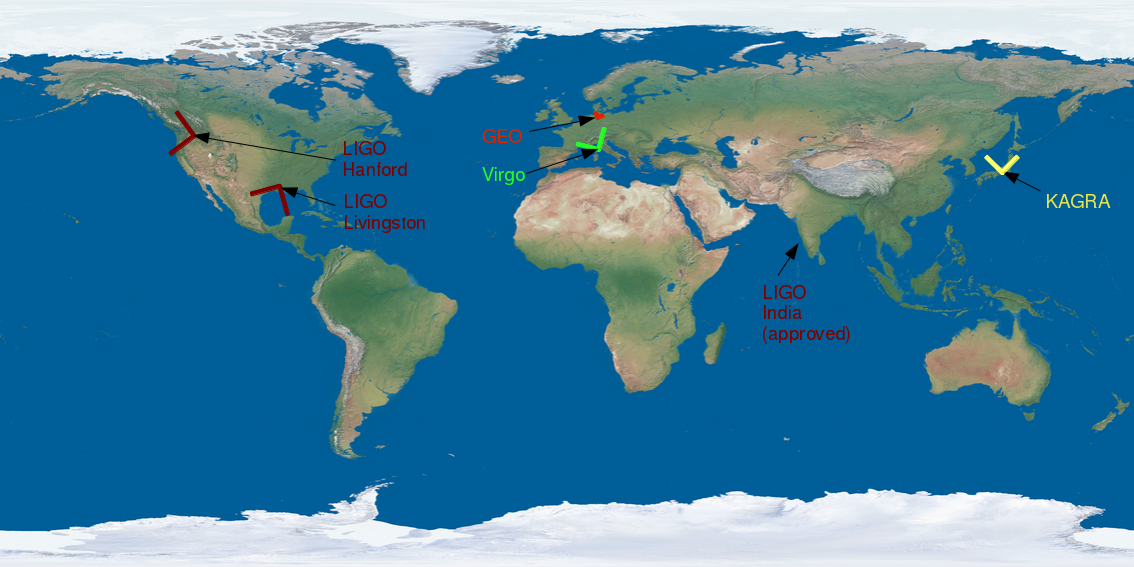
LIGO at the Hanford Site
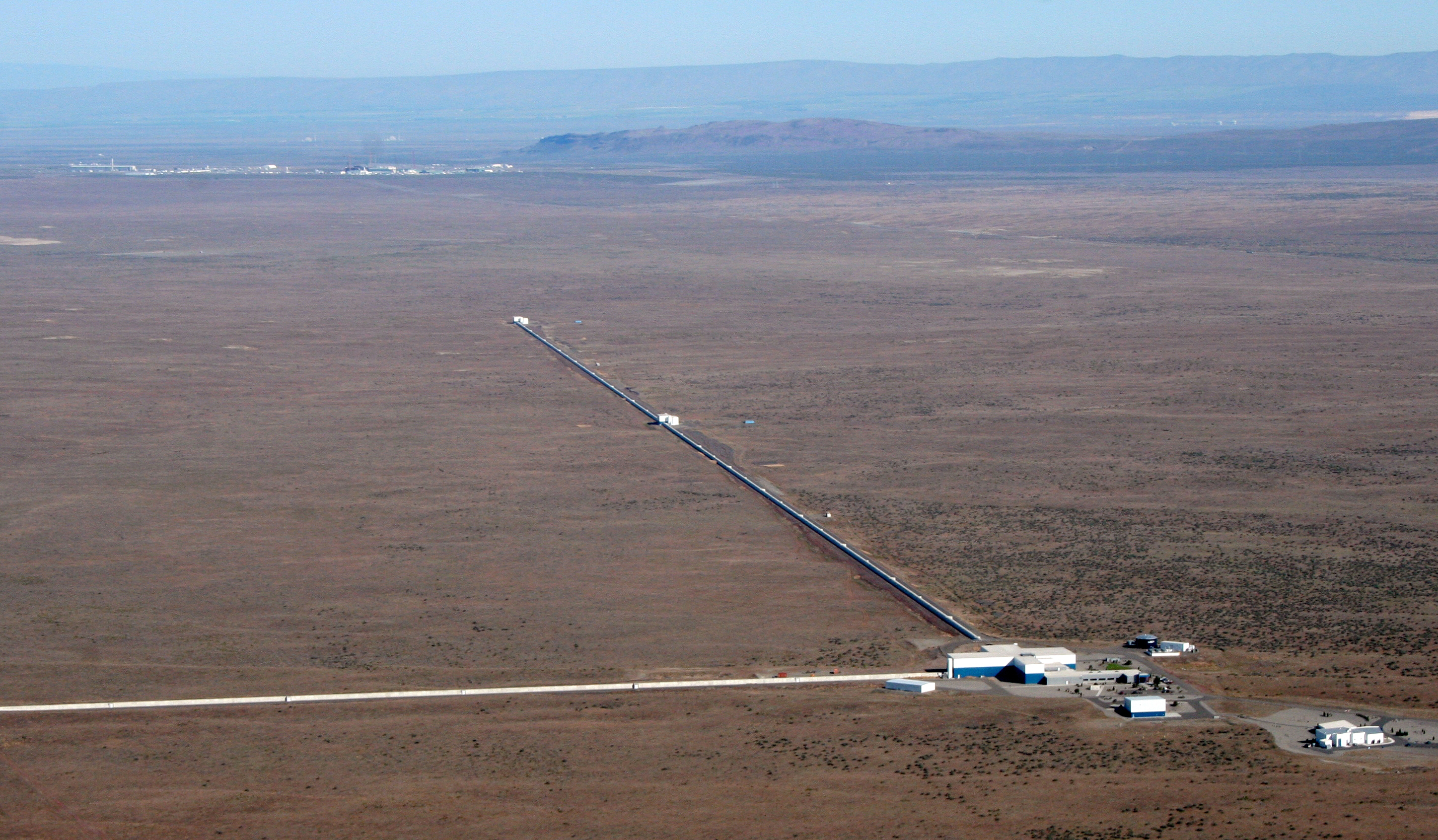
About LIGO
- Cost: 1 billion dollars
- Interferometers with 4km arms, $1064 \, \mathrm{nm}$ laser
- Each arm: Fabry-Pérot cavity (path length ~280 trips)
- Sister project in Europe: VIRGO
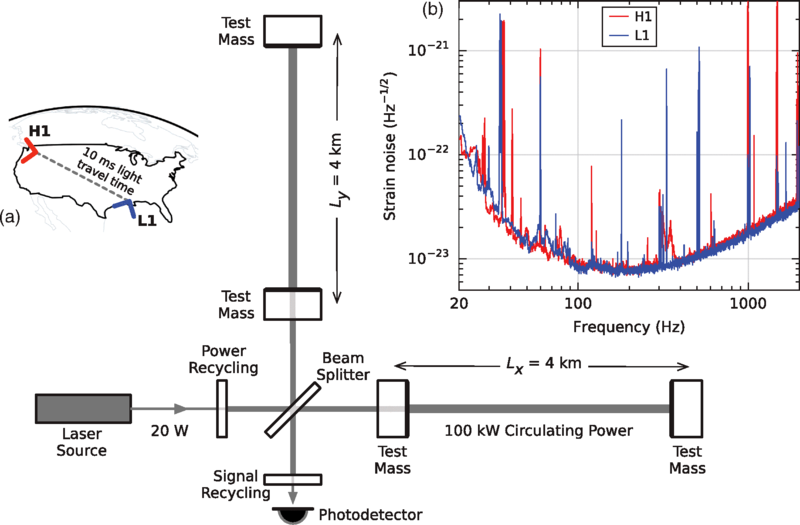
Two black holes merging
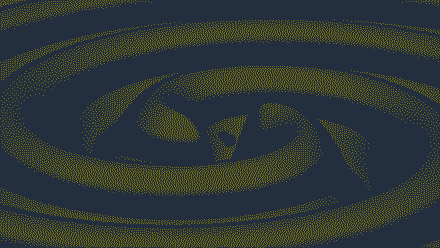
Prediction and measurement

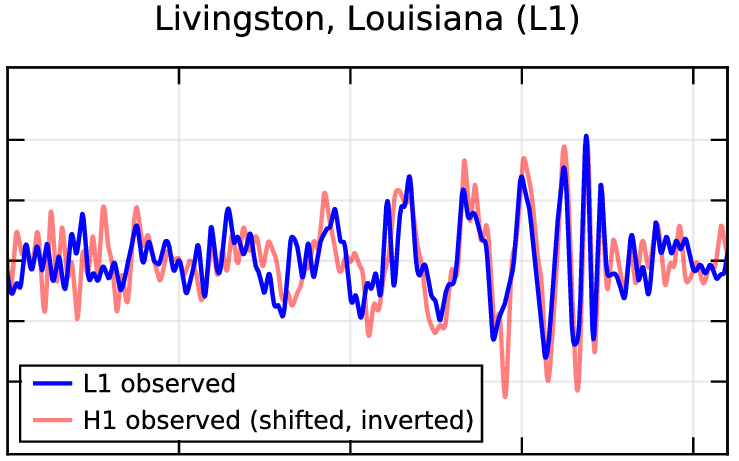
Two neutron stars merging
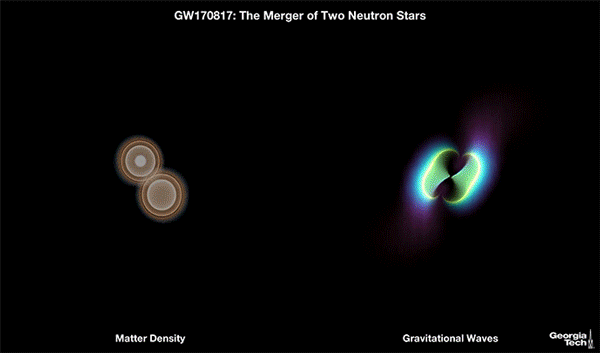
Multi-messenger
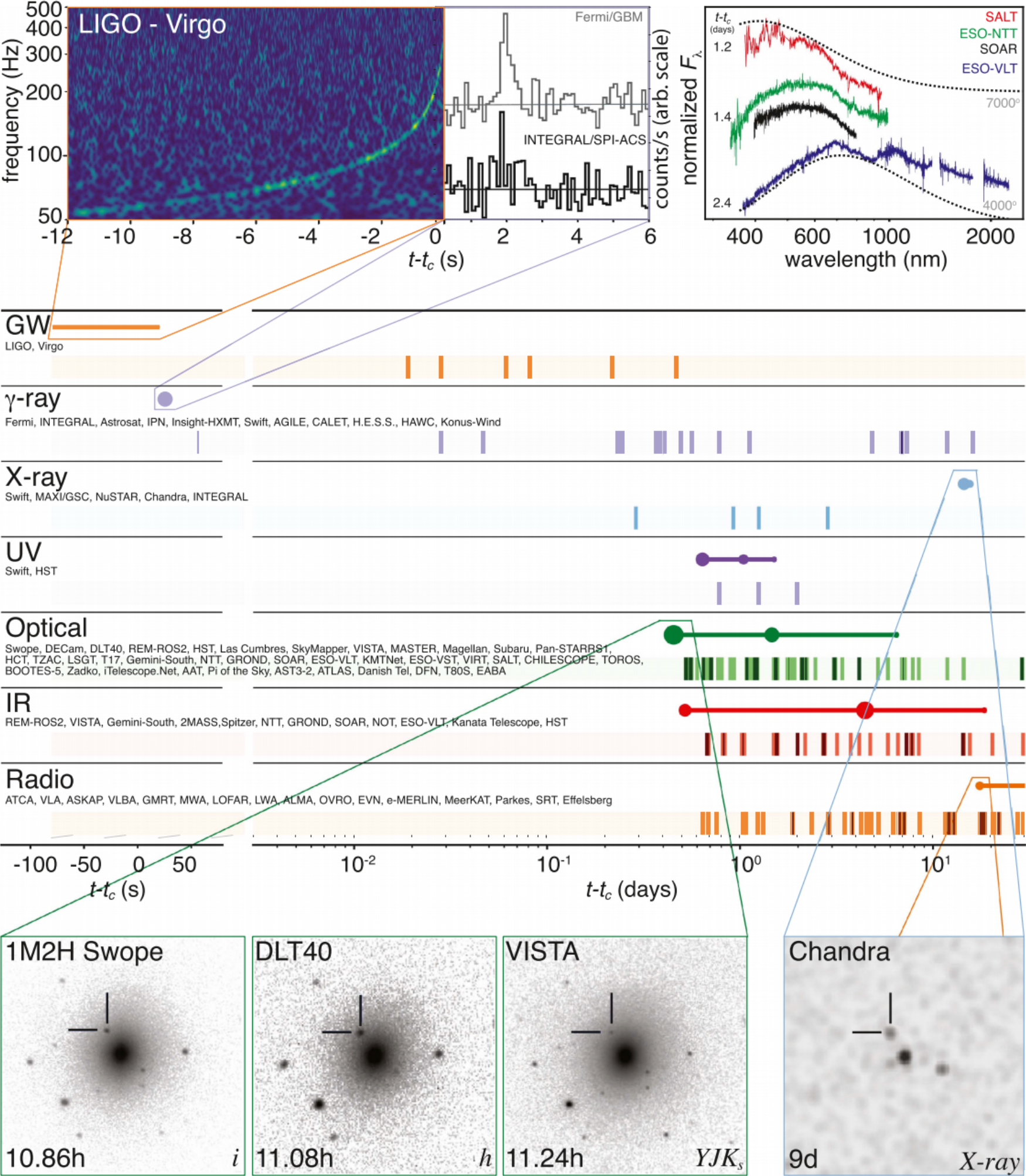
LIGO almost didn't see it...
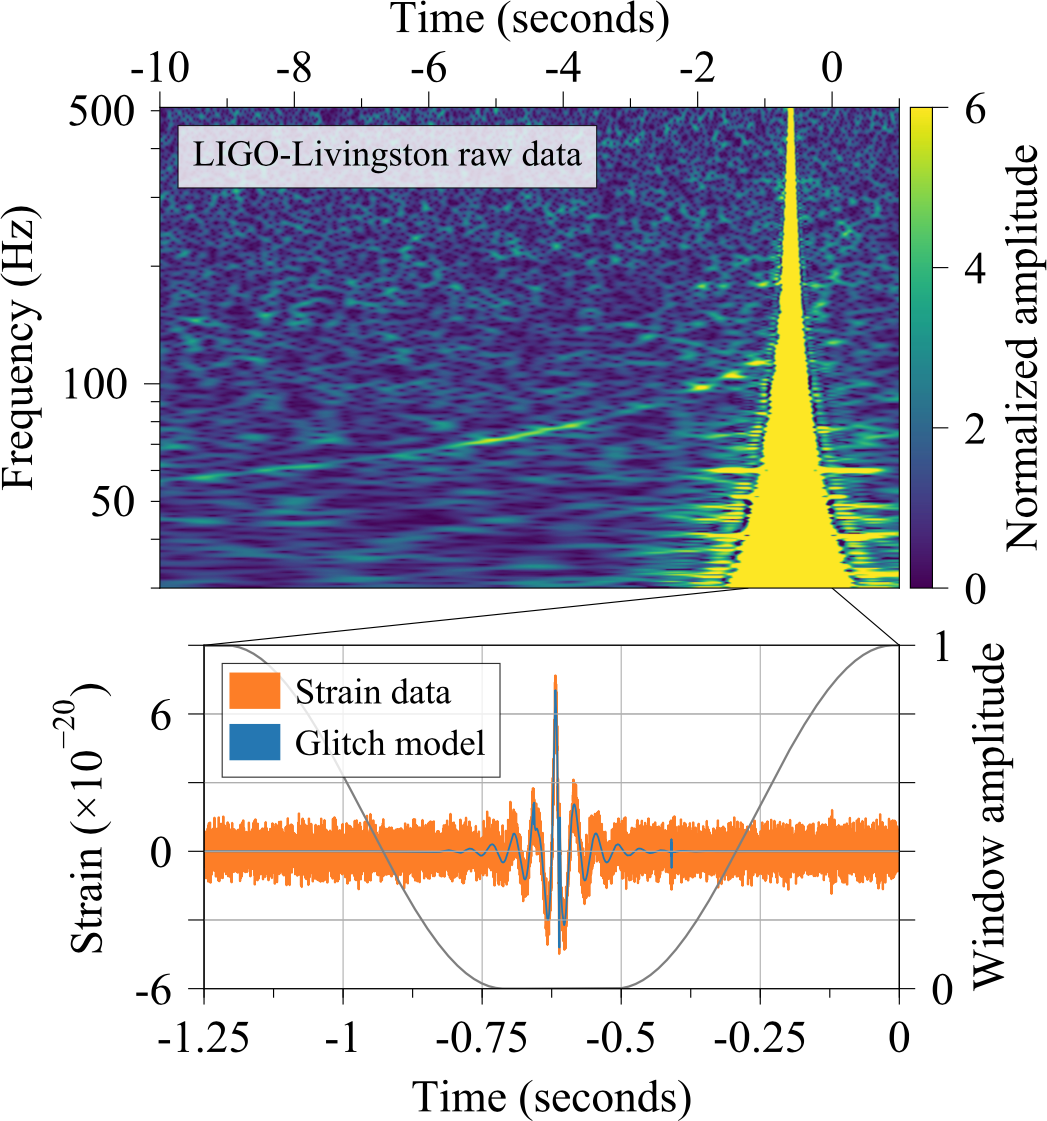
Neutron star merger and cosmology
- Photons arrived 1.7s later, after travelling
100 million ly
⇒ gravitational waves travel at the speed of light - Independent measurement of expansion of the
universe:
- Luminosity of gravitational waves → distance
- Telescopes observe host galaxy → velocity
LISA mission
To look at longer wavelengths, need to go into space!
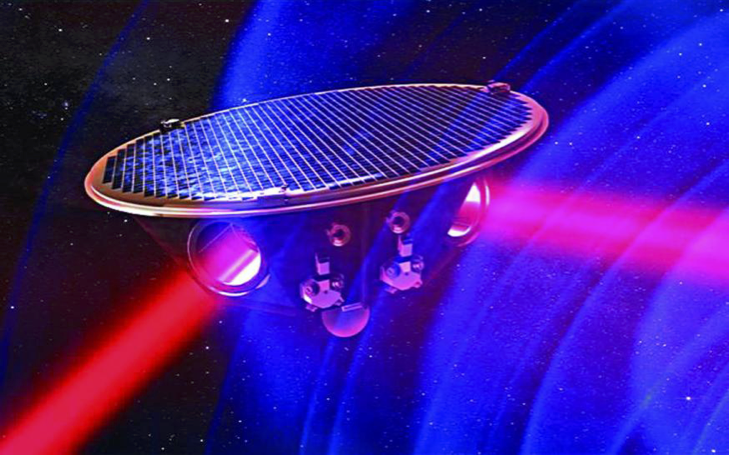
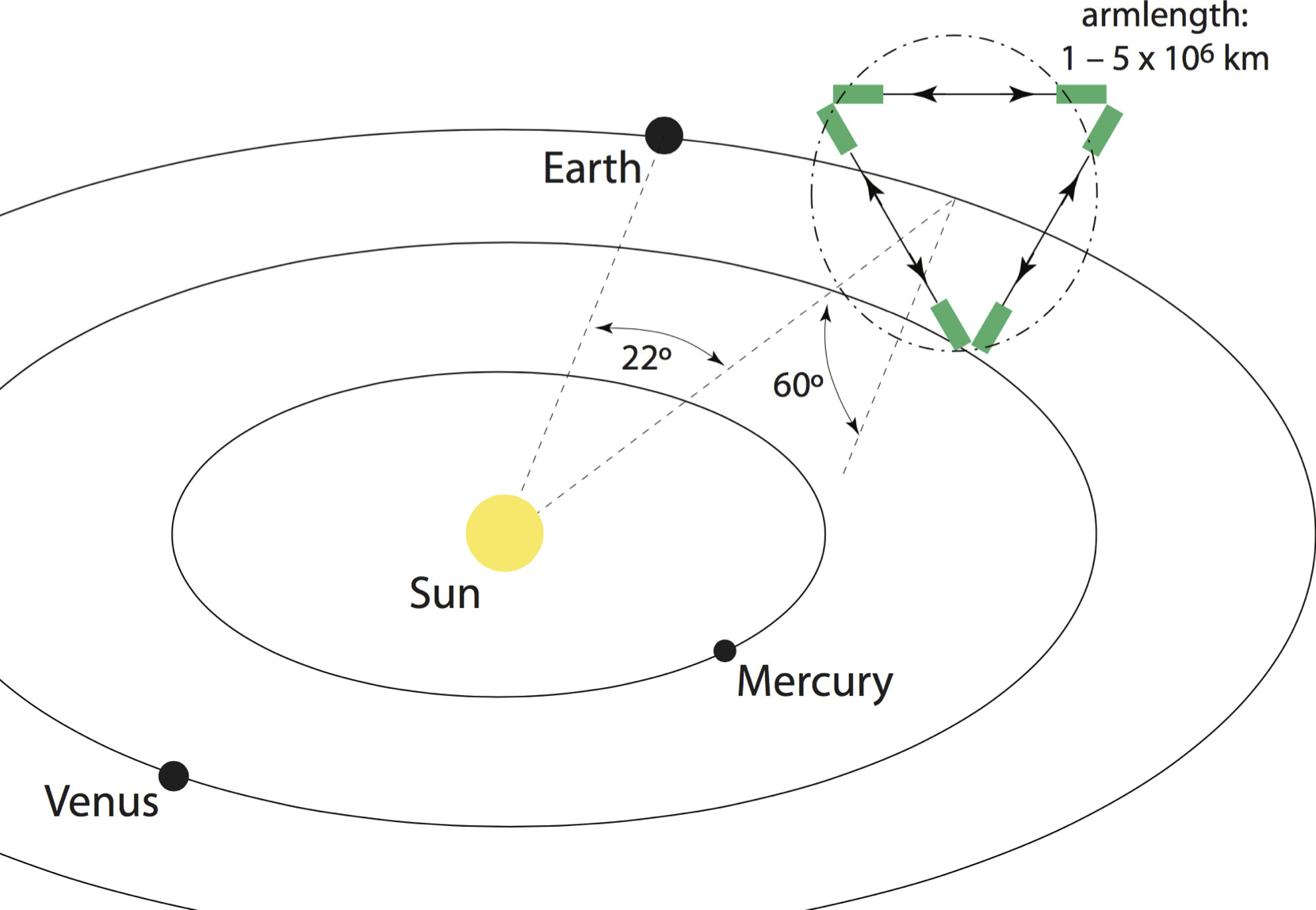
- Three arms (six lasers), 2.5 M km separation
- Launch 2034
LISA's orbit
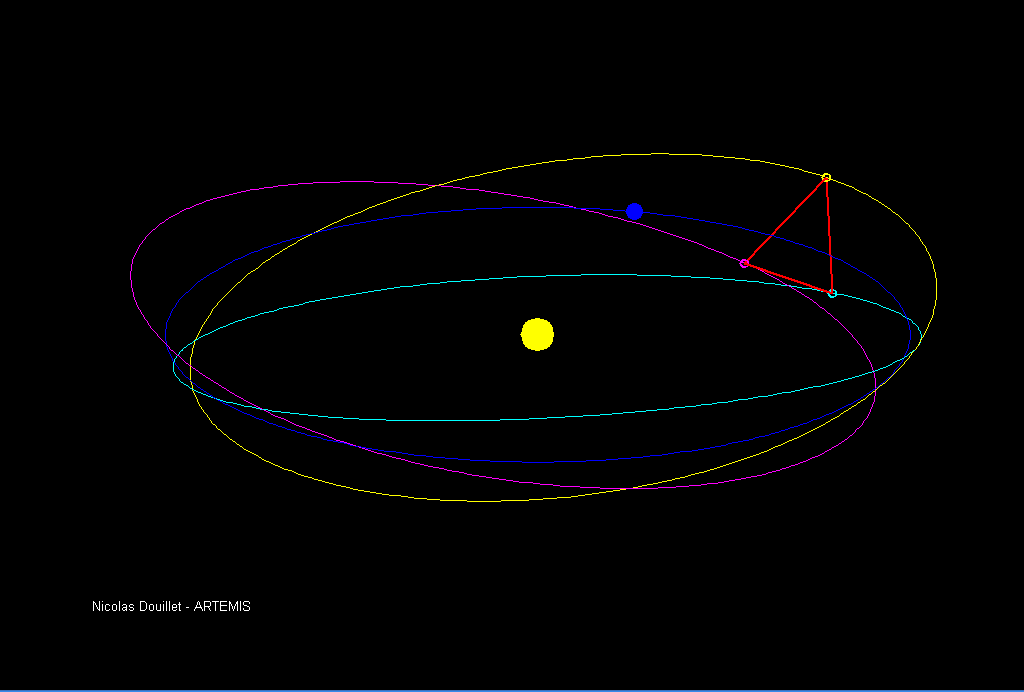
LISA pathfinder
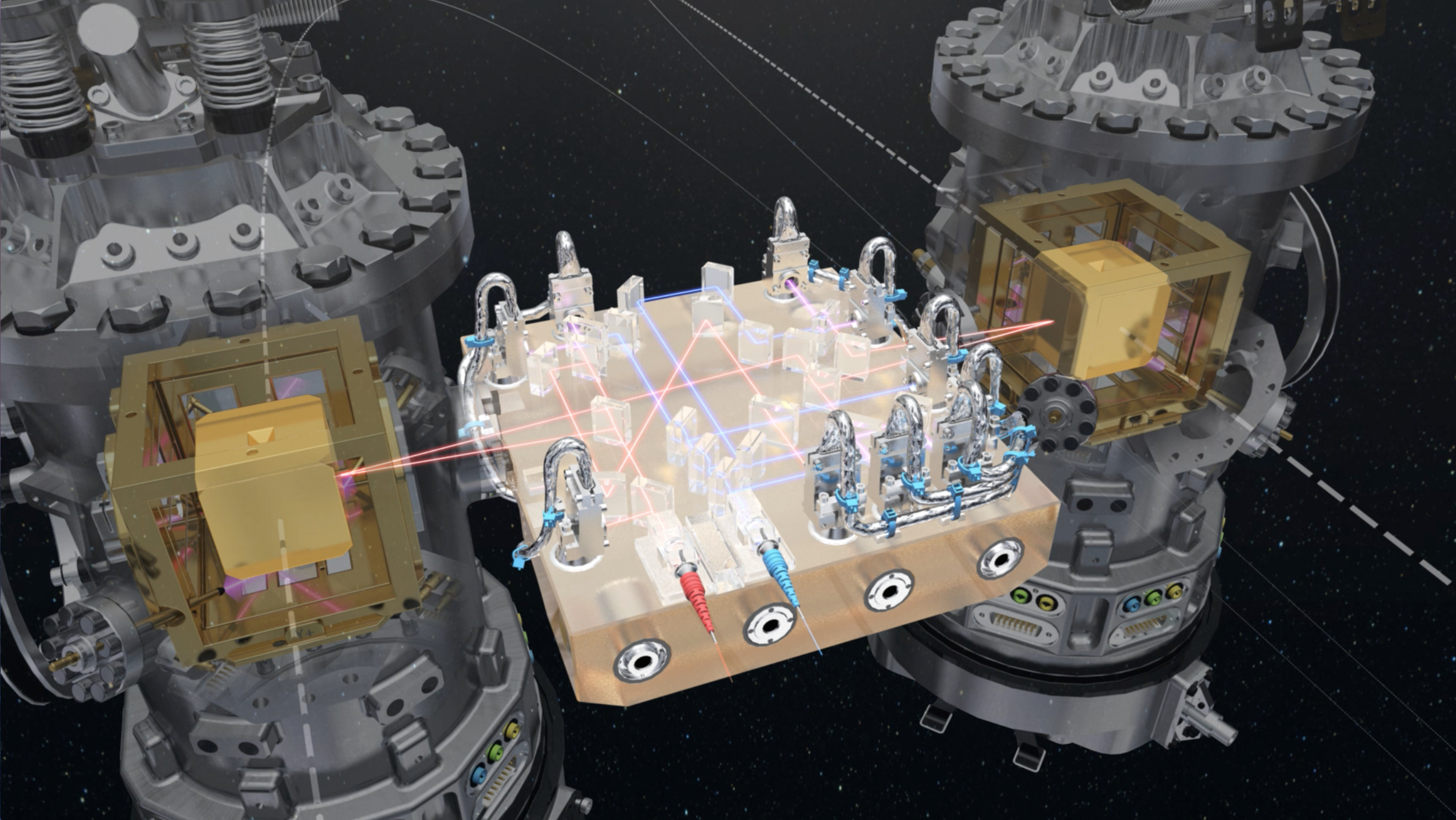
LISA: astrophysical signals
- Massive black hole mergers
(nearly anywhere in the universe) - Small objects
(stars, black holes)
falling into big black holes - Very compact pairs of stars
(orbital periods < 10 minutes)
in the Milky Way
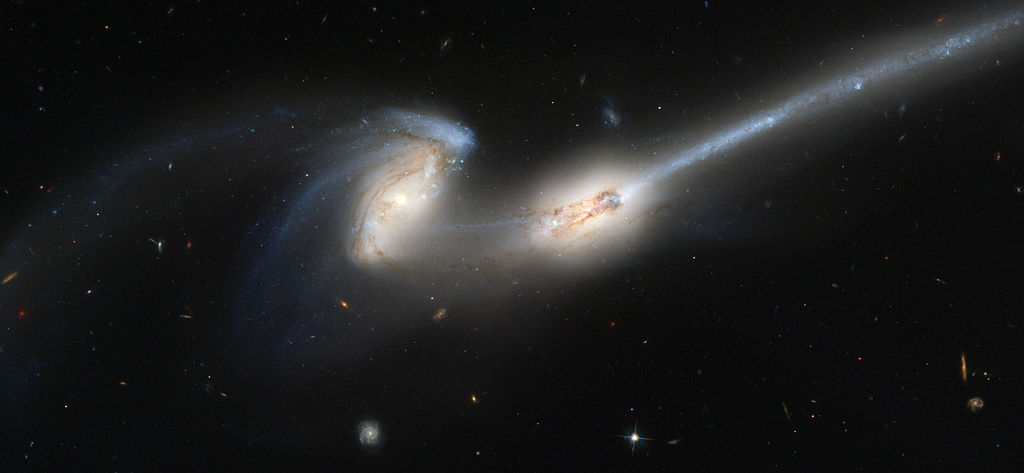
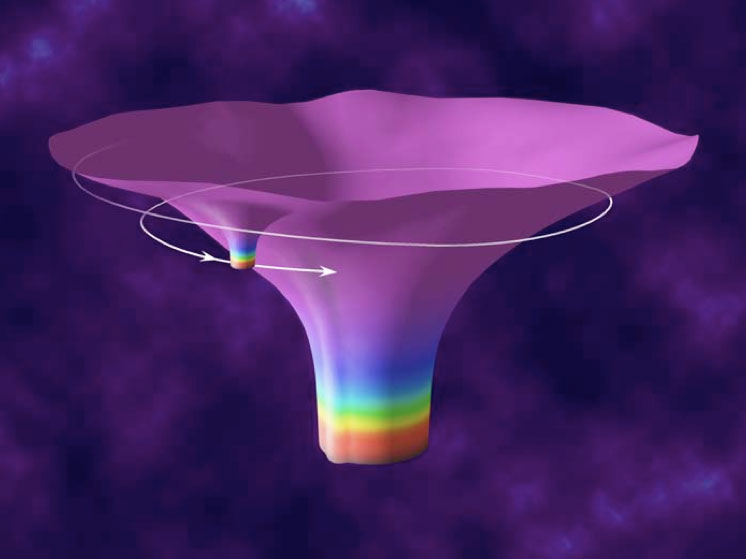
Pulsar timing arrays
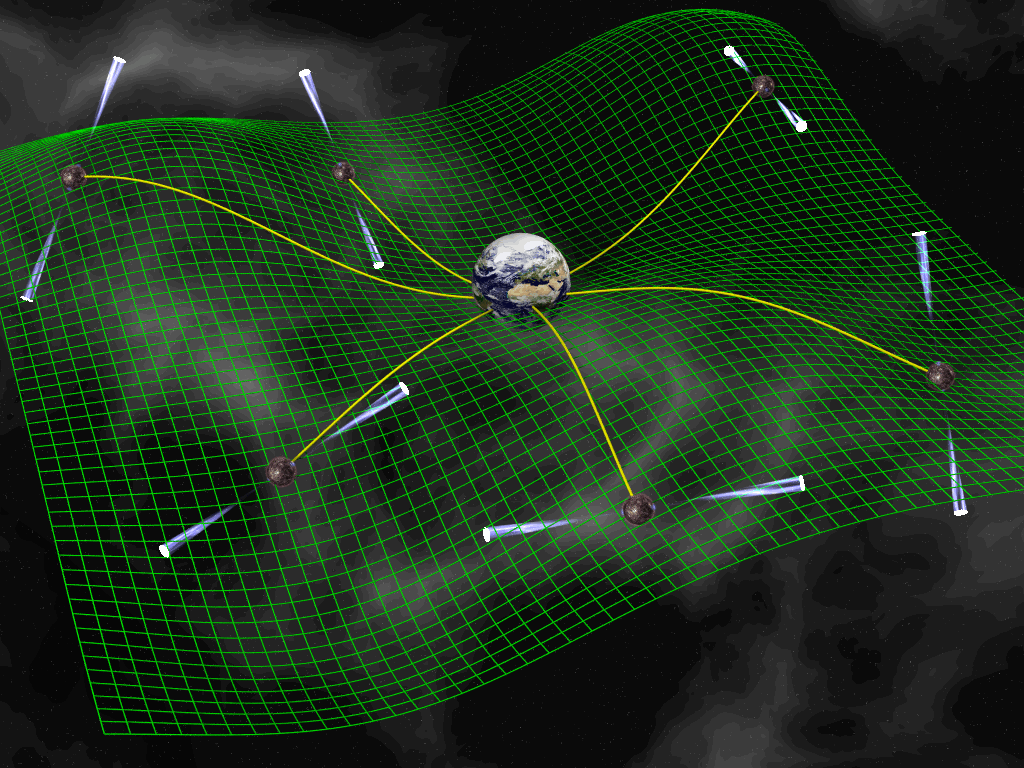
About pulsar timing arrays
- Millisecond pulsars (MSPs): very accurate clocks
- Check if they are 'ticking' like we expect
- Irregularities ⟷ gravitational waves
- Compare multiple pulsars at the same time
- Improve the signal
- Remove effects of 'physics' in the pulsars
- Applications:
- Very low frequency background
- Supermassive black holes
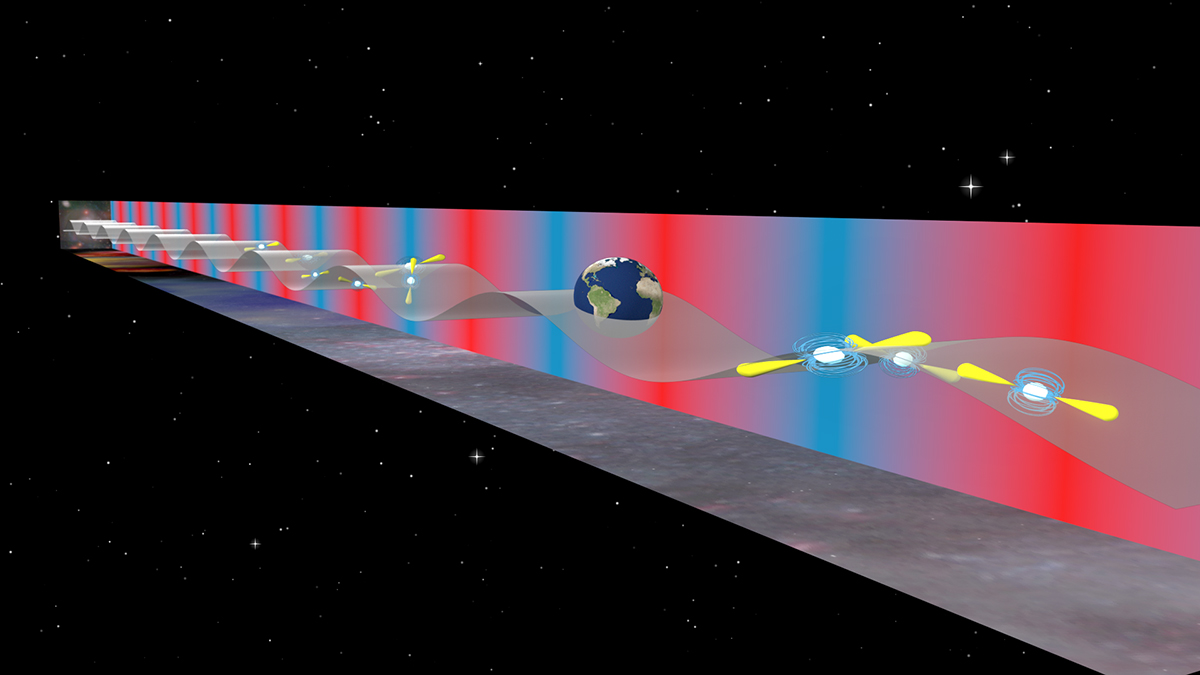
Pulsar timing arrays
Use radio telescopes like this (Arecibo)
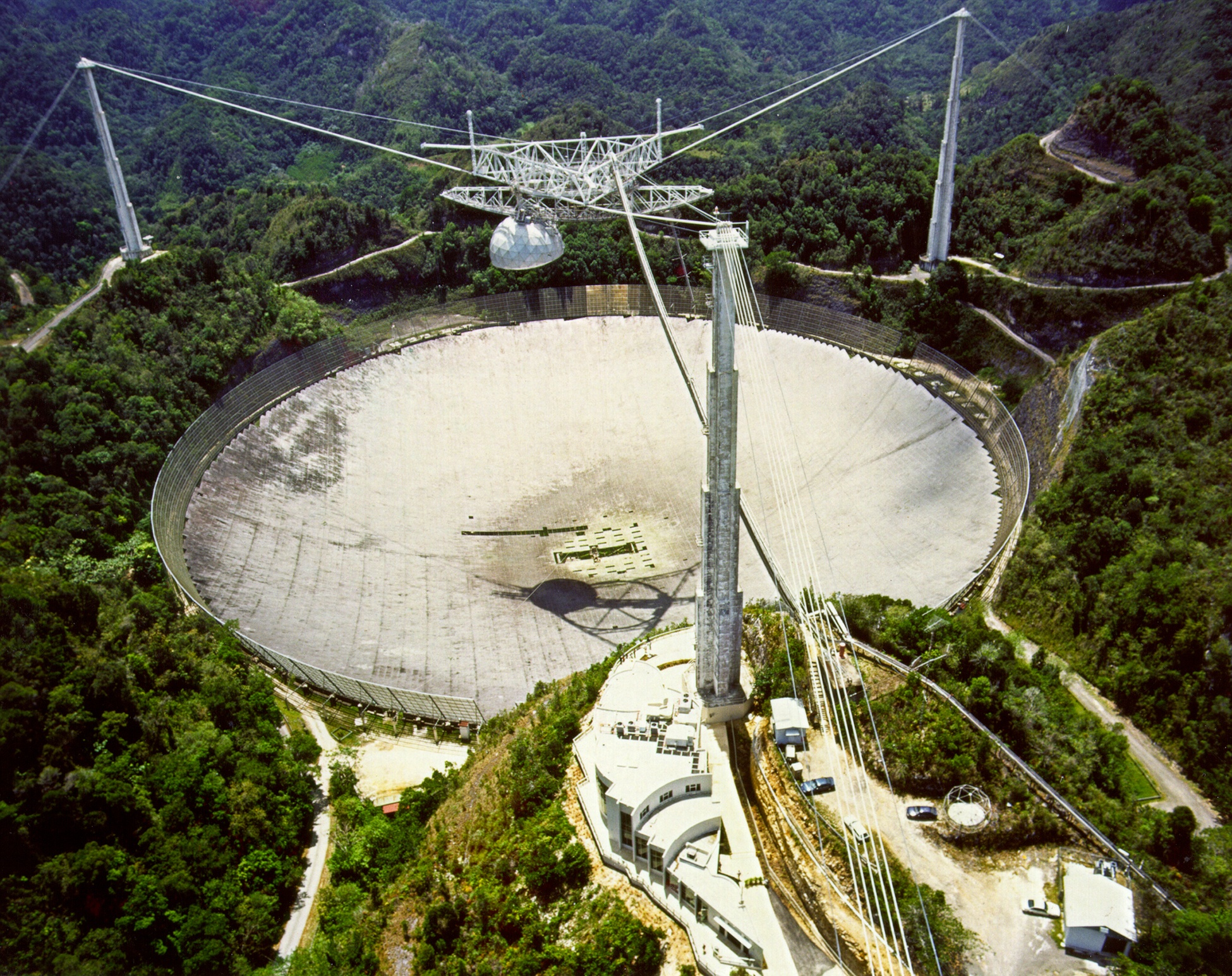
Gravitational waves
and the early universe
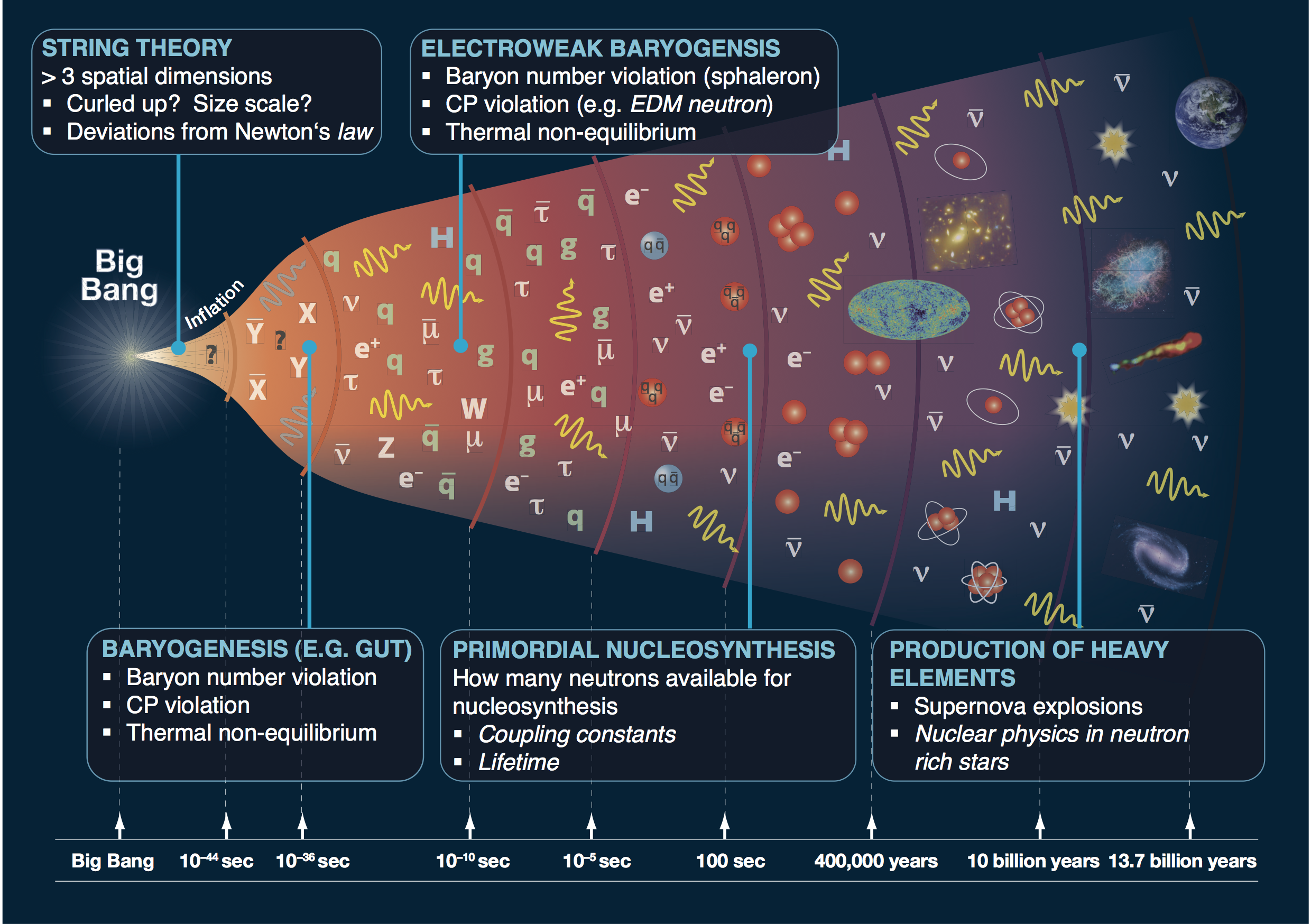
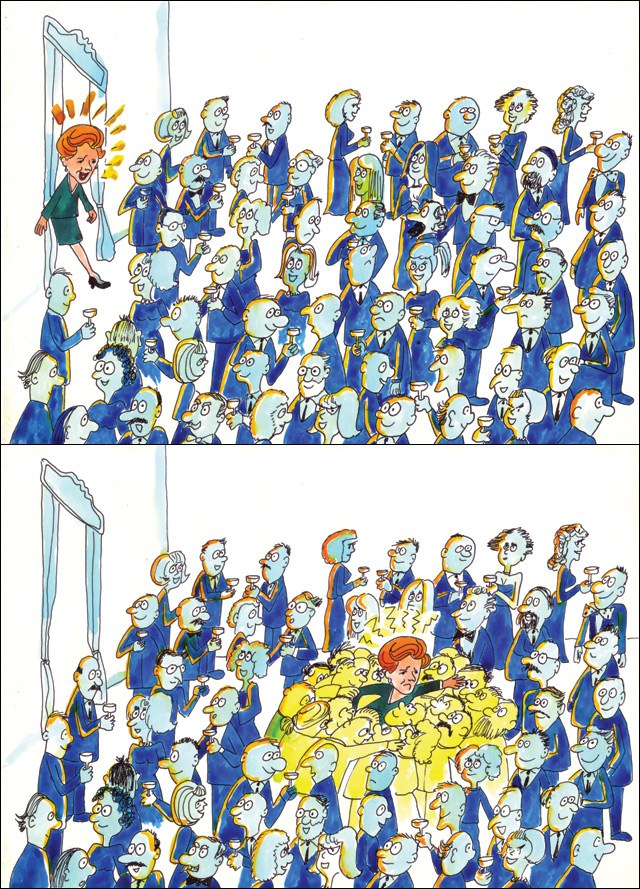
How did the Higgs get that way?
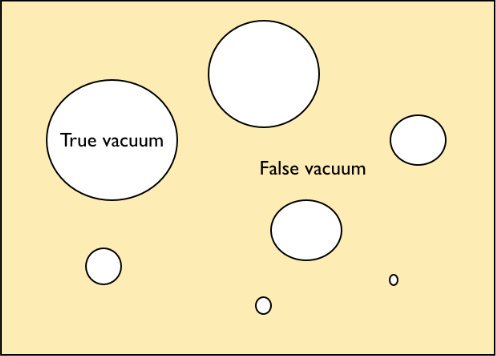

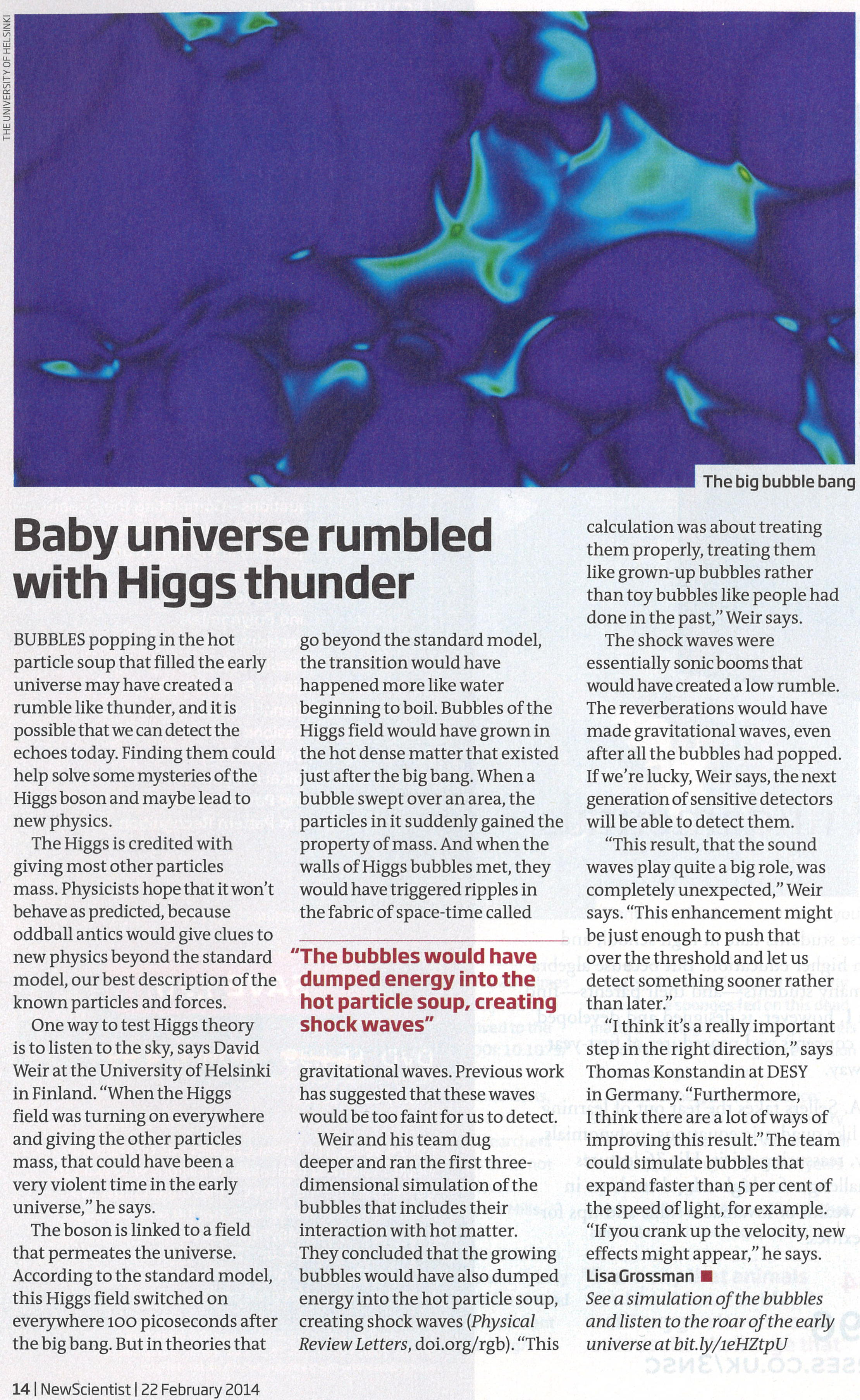
Thank
you!
